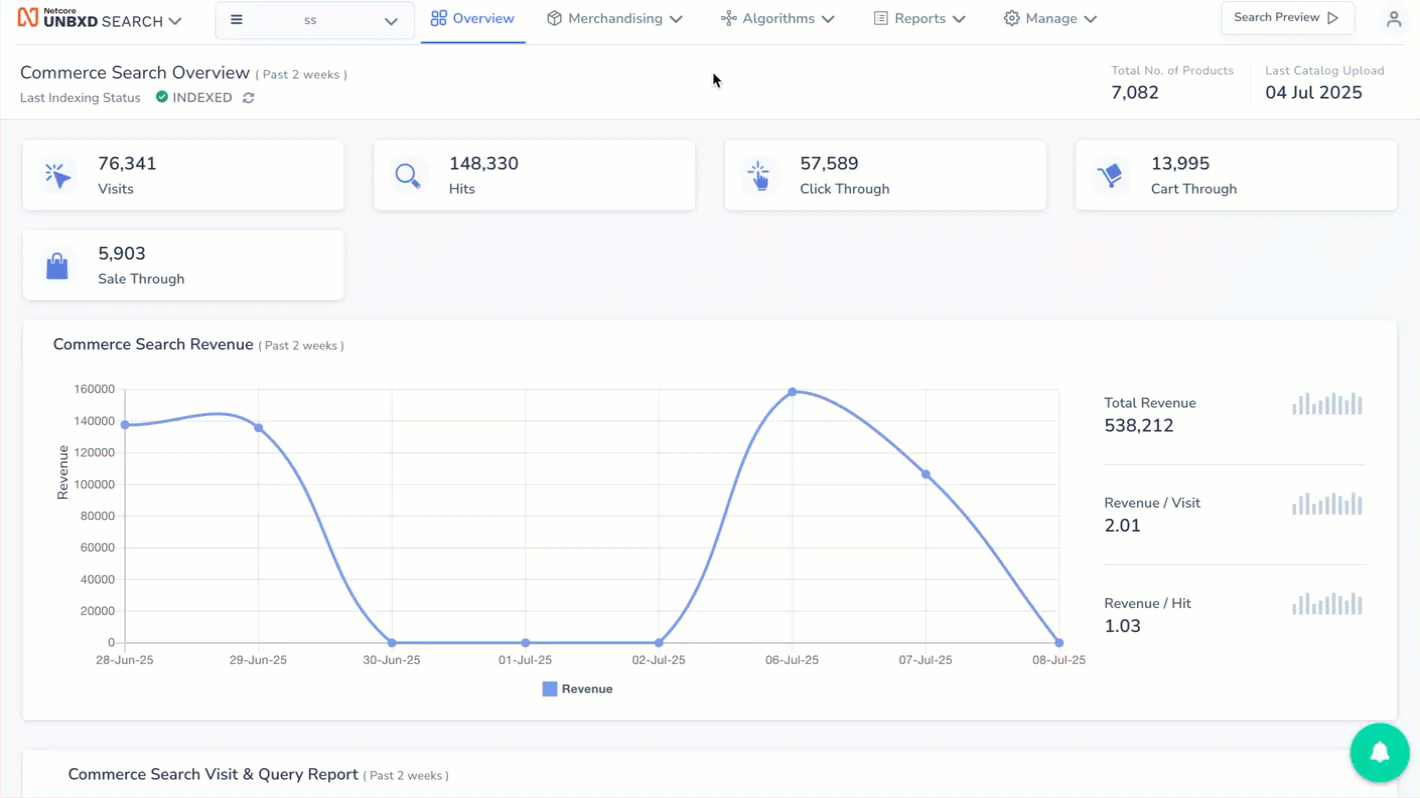Ranking
Improve search ranking by better ordering of search results.
Overview
Learn how User Behaviour (UB) and Popularity signals are used to influence product ranking on the search and browse experiences. Both mechanisms rely on analytics data and are enabled by default for all sites integrated with analytics.

Improve Search Ranking
Prerequisites
Before proceeding, ensure the following is done.
- Analytics Integration
- Site Access from Netcore Unbxd console.
There are two sections available for Ranking. Log in to Netcore Unbxd console and Navigate to Algorithm > Ranking
- User Behavior
- Popularity
User Behaviour (UB)
User Behaviour (UB) is a feature in Netcore unbxd that captures how users interact with products for a given search query. These interactions include:
| Event Type | Description |
|---|---|
| Click Events | Triggered when a user clicks on a product in search or browse results. |
| Add-to-Cart (Cut) | Captures when a user adds a product to their shopping cart. |
| Order Events | Logged when a user completes a purchase for a product. |
This is calculated at the query level. For example, if multiple users search for running shoes and frequently click or order Product A, it will receive a higher UB score for that query.
Configuration for User Behaviour and Popularity
- Default: UB is enabled by default for all clients with analytics integration.
- Custom Configuration: Clients can request custom UB formulas (e.g., adjusting weights for different interaction types) through the Analytics team.
NoteUI Controls: A button may be visible in the console but is currently a placeholder. Future updates may allow configuration through the console UI.
Below are the steps involved in User Behaviour Ranking:
- Event Tracking: Streamed events (click, cut, order) are collected via the analytics integration.
- Query-Level Aggregation: The system aggregates all interactions for a given query.
- Scoring: Products are scored based on interaction types using a default formula (e.g., more weight to orders than clicks).
- Boosting: These UB scores boost relevant products during future searches for the same query.
Popularity
Popularity reflects how often products are ordered across all queries and pages. Unlike user behaviour, popularity is site-wide and not tied to a specific query.
Below are steps are involved in Popularity Ranking
- Site-Level Aggregation: Orders are tracked across the entire catalog.
- Scoring: Products with higher order volume are assigned higher popularity scores.
- Top-N Products: The system identifies and ranks the top 1000 products by default.
Configuration
- Default: Popularity is also enabled by default for all clients with analytics integration.
- Custom Configuration: Clients can request:
- A different number of top products (e.g., top 100 instead of 1000)
- Custom weighting strategies (via Analytics team)
Updated 4 months ago
